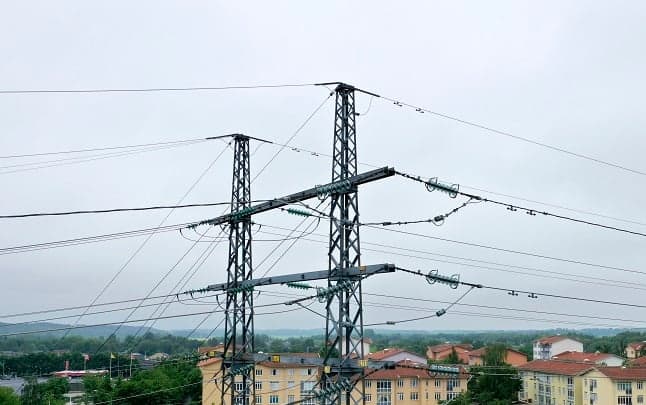Why electricity prices are so low in Sweden right now

The price of electricity is around half the level that it was at the same time last year in Sweden, and the mild yet windy winter is a big factor behind the drop.
Still, bottlenecks in the electricity grid have meant that prices are higher in the southern parts of the country.
The low prices are due to the mild winter Sweden has had, combined with a long period of a lot of precipitation and relatively windy weather, according to Tomas Jonson, CEO of comparison site Elskling.
"This means that reservoirs are filled to a high level, which provides good conditions for hydro power which represents 40 percent of the country's electricity production," he explained.
Meanwhile, the higher than usual temperatures for the season have helped reduce electricity use, which in turn lowers prices.
"Besides that, we have had record wind power. Swedish wind power has been built up at quite a fast pace and represents almost 15 percent of electricity production," said Jonson.
Simply put, the supply of electricity is greater than the demand, which pushes down prices. Elskling's own survey shows that the so-called spot price, which is set each day by power exchange Nordpool, is around half the level it was at in January last year.
However, there are variations depending on where in the country you live, and in southern Sweden electricity is more expensive since the region doesn't have the same surplus.
"It's due to restrictions in the electricity grid. Most power is produced in northern and central Sweden, but most consumption happens in southern Sweden," said Jonson. "It's hard to get the electricity down from the northern parts to those in the south, and there are bottlenecks."
Continued low prices for electricity are expected throughout 2020, but they may start increasing next year, analysts expect. In the future, electricity is expected to be increasingly dependent on weather due to the increase of wind power in Sweden at the same time as nuclear power is being reduced.
"Wind power will continue to increase and in 2021 a new nuclear power plant will open in Finland. But we also think that electricity usage will increase in the Nordics: more electric cars, more data centres and more industries that require electricity," said the Elskling CEO.
READ MORE:
Vocabulary
electricity grid – (ett) elnät
bottle neck – (en) flaskhals
hydro power – (en) vattenkraft
to reduce – att minska
surplus – (ett) överskott
Comments
See Also
Still, bottlenecks in the electricity grid have meant that prices are higher in the southern parts of the country.
The low prices are due to the mild winter Sweden has had, combined with a long period of a lot of precipitation and relatively windy weather, according to Tomas Jonson, CEO of comparison site Elskling.
"This means that reservoirs are filled to a high level, which provides good conditions for hydro power which represents 40 percent of the country's electricity production," he explained.
Meanwhile, the higher than usual temperatures for the season have helped reduce electricity use, which in turn lowers prices.
"Besides that, we have had record wind power. Swedish wind power has been built up at quite a fast pace and represents almost 15 percent of electricity production," said Jonson.
Simply put, the supply of electricity is greater than the demand, which pushes down prices. Elskling's own survey shows that the so-called spot price, which is set each day by power exchange Nordpool, is around half the level it was at in January last year.
However, there are variations depending on where in the country you live, and in southern Sweden electricity is more expensive since the region doesn't have the same surplus.
"It's due to restrictions in the electricity grid. Most power is produced in northern and central Sweden, but most consumption happens in southern Sweden," said Jonson. "It's hard to get the electricity down from the northern parts to those in the south, and there are bottlenecks."
Continued low prices for electricity are expected throughout 2020, but they may start increasing next year, analysts expect. In the future, electricity is expected to be increasingly dependent on weather due to the increase of wind power in Sweden at the same time as nuclear power is being reduced.
"Wind power will continue to increase and in 2021 a new nuclear power plant will open in Finland. But we also think that electricity usage will increase in the Nordics: more electric cars, more data centres and more industries that require electricity," said the Elskling CEO.
READ MORE:
Vocabulary
electricity grid – (ett) elnät
bottle neck – (en) flaskhals
hydro power – (en) vattenkraft
to reduce – att minska
surplus – (ett) överskott
Join the conversation in our comments section below. Share your own views and experience and if you have a question or suggestion for our journalists then email us at [email protected].
Please keep comments civil, constructive and on topic – and make sure to read our terms of use before getting involved.
Please log in here to leave a comment.